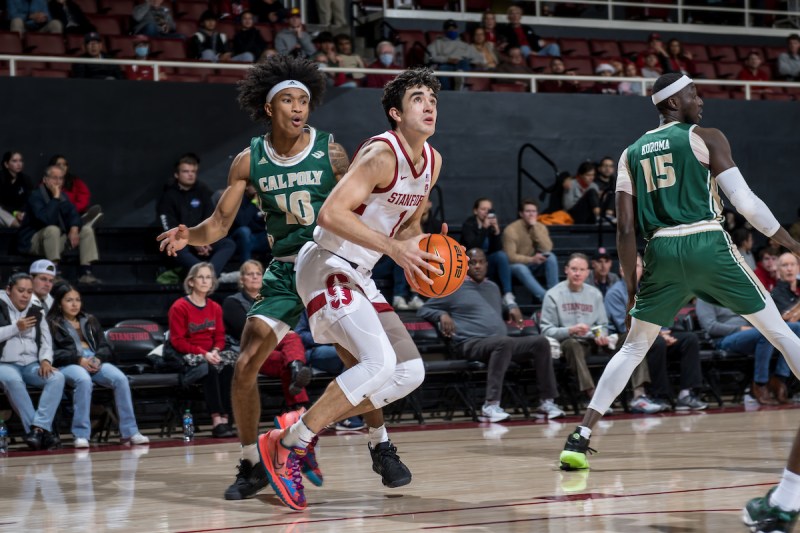This first installation of Stanford basketball film study will take a look at one of Stanford’s most used offensive actions: the empty ball screen. The empty ball screen is one of the most utilized actions in all of college basketball. With NCAA teams increasingly using five-out offense nowadays, look for the empty ball screen to increase in utility. Like other teams, Stanford uses the empty ball screen to create more space for the roller and to scheme shooters open by pressuring help defenders.
What is an empty ball-screen?
An empty ball screen is simply a pick-and-roll in which the roller moves toward the side of the court with no offensive players. If the player with the ball decides not to use the screen and reverses the ball, a cutter usually cuts backdoor and another empty ball screen can be made.
Some teams like to run the empty ball screen as a continuous action, while other teams will only do it once at the beginning of the shot clock. Coaches will also try to use false motion to get into the action.
The empty ball screen provides several options for the offense. The guards can try to hit the roller on the empty side, where he has a lot of space. Teams can also run pick-and-pop off this action if the bigs are quality shooters. The guard can also reject the screen and conduct a baseline drive if there’s enough space. If opposing bigs try to aggressively hedge, the screener can slip and get an easy eight to 10-foot shot at the rim. The action can also provide pressure on help defenders by forcing them to choose whether to stick to shooters on the wing or stay at the nail.

On this offensive possession against Wisconsin, Stanford uses false motion to prevent the pass to junior guard Michael O’Connell from being denied. O’Connell catches the ball on the wing and initiates an empty ball screen with junior forward Brandon Angel as the roller. The defense decides to hedge the ball-handler, and Angel reads this and decides to slip the screen. Wisconsin’s help-side defender is preoccupied with the movement of fifth-year Michael Jones, a prolific shooter, to the opposite corner, and he’s not able to prevent Angel from getting an easy basket.
With the Cardinal offense struggling early this season, it will be interesting to see if head coach Jerod Haase will decide to tweak the use of this action. The action could be used more as a continuity, where the team keeps running the play, or the pace of the screen-and-roll could be increased.
